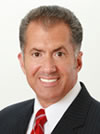Business Solutions
A Look Ahead For HME
Members from HMEB's editorial advisory board identify some key trends that will impact the industry.
- By David Kopf
- Oct 01, 2018

Photo © appalachianview
Each year members of HMEB’s Editorial Advisory Board take the time to scan the industry’s horizon for new trends, issues, challenges and opportunities that will either impact providers in coming months or are already starting to make themselves felt.
This year’s installment of our annual roundtable discussion takes into account some trends providers might already be thinking about, as well as several they might not yet have considered. Let’s dive in and see what trends are coming into focus:
Competitive Bidding Takes a Breather
 Jeff Baird, Esq., chairman of the Health Care Group for industry law firm Brown & Fortunato, P.C.
Jeff Baird, Esq., chairman of the Health Care Group for industry law firm Brown & Fortunato, P.C.
For any providers that haven’t care to look at the headlines lately, competitive bidding is going to go on hiatus starting Jan. 1, 2019, because CMS and the Competitive Bidding Implementation Contractor (CBIC) did not opt to bid it out again. This means the program will be dormant for 18 to 24 months and during that time Medicare accredited DMEPOS providers can offer items for which they didn’t have a bidding contract.
“This is going to require DME suppliers to decide what relationship do they want to have with competitive bidding,” Baird says.
Baird identifies three issues in this regard:
First, there are a number of HME providers that have entered into what are called common ownership arrangements, otherwise known as 5 percent arrangements. In such an arrangement a provider without a contract buys 5 percent of the stock of supplier with a contract in order to get added to that providers’ contract, with the permission of the CBIC.
“The question becomes … do they want to unwind these common ownership arrangements effective Dec. 31?” Baird asks.
Second, there are a number of providers that have entered into subcontract arrangements. Baird asks whether they too are going to want to unwind these effective Dec. 31.
Third, there have been a number of providers that have simply decided for various reasons to quit playing in the Medicare market and focusing on cash, Medicare Advantage, Medicaid managed care, and other funding sources.
“They have finally gotten used to not being dependent on Medicare fee for service,” Baird says. “Now that competitive bidding is going to go away, are they going to jump back in?”
And for all those scenarios, there remain several factors to consider, if those providers do change their strategy due to this lull: do they want to change their course when bidding will hit 18 to 24 months later? Do they want to go through establishing new referral relationships? Have they let their Medicare accreditation lapse? Do they want to ensure they have the right licensing? Will they commit past the gap period when bidding starts again? Do they want to deal with Medicare claims audits?
The questions aren’t easy to answer, Baird notes, because providers have to balance the increased revenue against the likely more stable business models they have developed over the past years.
“It’s a lot of uncertainty,” he says. “Really the question is, does the supplier want to play the Medicare competitive bid game … Basically. this gap period that’s about to hit is going to force DME suppliers to figure out what they want to do with their lives.”
Protecting Patient Data
 Wayne van Halem, president and founder of The van Halem Group LLC, a division of the VGM Group Inc.
Wayne van Halem, president and founder of The van Halem Group LLC, a division of the VGM Group Inc.
TPE and UPIC audits have been a key audit trend for providers this year, but van Halem sees even more on the horizon: For starters, his firms is seeing a lot of managed care plans auditing out-of-network providers and implementing extrapolated overpayments.
“Quite honestly, it’s questionable whether they even have that authority to do that,” he notes. “… We’re finding that they’re a lot more challenging than Medicare, solely because while the rules are similar, the plans aren’t very familiar with them, so they interpret the regulations and the policies a little bit differently. Also, in many cases, they haven’t given our clients the appropriate appeal rights that they’re supposed to be afforded.”
Also, van Halem highlights HIPPA and Office of Civil Rights (OCR) reviews designed to protect patient healthcare information (PHI). In initial phases, the OCR identified the parameters of its review and performed more than 200 audits. Now it’s compiling the data and van Halem says the results have so far shown that none of the providers passed all of the audit components and 86 percent failed in a certain category either by making either minimal efforts to comply, negligible efforts, or no efforts whatsoever.
“When you have results that surprising, I think it’s gotta be a wake-up call to providers that HIPPA compliance, cybersecurity, and protecting patient information has got to be a priority for them,” he says. “… But we’ve seen a number of companies in the DME space that have had some hacks that have resulted in patient data getting stolen. … So I think that’s really a key thing that our industry needs to getter better on.”
To confront this, van Halem says providers must implement a HIPPA compliance program that includes education and training, as well as conducting a security and risk assessment that addresses not only administrative safeguards, such as policies and procedures, but also looks at the physical safeguards, such as buildings, equipment and technical safeguards.
“There are a number of actions out there that suppliers should be taking to protect themselves through firewalls and other authentication methods,” he says. “… The fact that they’re holding patient-specific data makes them a significant target, so they have to improve technology, have a compliance program that specifically addresses the technical safeguards that are required by HIPPA, and perform a regular security and risk analysis.”
A Continuing Drive to Revenue Diversity
 Tom Ryan, president and CEO, the American Association for Homecare
Tom Ryan, president and CEO, the American Association for Homecare
While fighting the industry’s legislative and regulatory battles as the leader of the industry’s national association, for many years Ryan ran Definitive Homecare, a large regional provider in New York, and the big trend he’s seeing is the continued need for providers to broaden their revenue sources.
“We’re moving in a direction of not having all our eggs in the Medicare basket,” he says, adding that providers need to make sure “that whatever business you do is going to have a healthy margin to it so you can grow your business. … Many providers who have been on the sidelines for three years without a contract survived and will continue to survive by having a diversified payer mix.”
Obviously, a key way to diversify is through cash, but that’s not the only route, Ryan says. Providers have a variety of payers both private and public outside of Medicare that they need to pursue. This is why the American Association for Homecare has doubled down on its payer relations efforts. The goal is to help providers sourcing funding from a wide spectrum of payers.
We’re looking to actually grow when it comes to working with the provider community because more and more of the needs are in the states and with the individual ACOs and managed care organizations,” he says. “Our job is to see if we can get guidelines on what’s worked in some states before to help the providers. Also, we don’t particularly like the sole source initiatives that have gone on in some of the states. We put some resources and time and a sub-group together to talk about how important it is to have a broad panel, to have patient choice and good access.”
For providers that are just starting to branch out, Ryan suggested that an increasingly untraditional Medicaid market, 70 percent of which is now managed car or accountable care organizations, is a good place to start.
“You have to be part of the panels and you’ve got to look for the RFPs,” he advises. “They’re not going to fall in your lap, they’re not going to be sent to your address just because you’re a DME company. You’ve got to proactively go after those RFPs, know when those contracts are out, knowing those RFPs are coming out, go in, meet the people who are sending the RFP out, get them to know who you are, and respond diligently. … You have to be aggressive and go after them.”
Taking Referral Sales Strategy to the Next Level
 Ty Bello, RCC, president and founder of Team@Work
Ty Bello, RCC, president and founder of Team@Work
As providers find themselves in an increasingly competitive post-acute marketplace, they need to do a must stronger job of analyzing their sales position, according to Bello.
How do they do that? He suggests providers envision a Venn diagram with three overlapping circles of sales data, the sales plan or process, and finally the provider’s customer relationship management (CRM). The sweet spot where all three overlap should be a provider’s unique sales niche in its post-acute marketplace.
Starting with data, providers need to use the information available to them more strategically. For instance, they can drill down to HCSPC code, diagnosis codes, and even which physicians are referring patients based on those codes.
“I say this to providers all the time,” Bello says, “would you rather have your sales rep calling on 150 different locations … or would you rather spend your time and talent of that individual focusing on 50 that you know are the top producers in that market segment? Well, the answer’s pretty obvious.”
Next, providers must examine their plan and the process.
“From the data, leadership can gain immediate competitive market analysis of referral rankings, claim counts, and can also understand the revenue growth and profitability calculation of what’s going on in that marketplace,” Bello says. “We can glean real-time productivity and even sales performance metrics of our team and we can help set not just the plan or process, but, the thing that I’ve been talking about for 28 years, the scripting. … Now I know what I’m going to say when I go in there on how to win that referral source over from company A, B and C.”
The final component is the CRM — how do providers analyze their performance against their plan? And the tools available to the industry, such as Playmaker Health, Bello says are taking it to that activity to the next level.
“CRM used to mean simply tracking the account information,” he says. “Today, it’s actionable intelligence. It informs strategic growth. It helps you see, not just where we’re going but what we’re talking about, what we’re doing and how to prioritize those and how to take advantage of switching those over time.”
Need for Even Greater Automation
 Rob Boyeye, executive vice president of HME for Brightree LLC
Rob Boyeye, executive vice president of HME for Brightree LLC
And as providers work with a wider array of funding sources and referral partners, the need to automate business processes becomes even greater than it has in the past. As a result, the ability to securely share information throughout the care continuum is growing crucial.
“Our customers have told us that they really need more automation and efficiency regarding the intake process,” Boeye says. “So, we’re answering that through solutions like a new patient hub app, and e-prescribe integration where that allows them to connect many EHRs, and to many third-party solutions, which will allow them really to improve service levels, not only at the referral sources, but also with the patients.”
The goal: get rid of the back-and-forth paper process involving physician’s notes, discussions of CMNs, and documentation hunts that gum up providers’ workflows. Instead, they’ll be able to electronically share the types of information needed to get a claim paid, such as patient data and demographics, insurance information, ordering physician and diagnosis information. This will be a boon not only in terms of processing claims, but in cementing referral relationships, according to Boeye.
“They’re going to be able to connect with their clinical providers, and receive and process those orders electronically without even interrupting … that clinician’s existing workflow,” he says. “We’re not trying to have physicians or referral sources change their workflows.”
Moreover, the provider can become the source of data that can help referrals, as well.
“With this type of technology, we feel we can move post-acute care away from that whole black hole of being seen as only care delivery,” Boeye adds. “The HME provider goes from being seen as the one to deliver care, to the one that can really provide that referral source with the right information on the patient when they need it.”
Amazon-Proofing Providers’ Retail Sales
 Wayne Slavitt, founder and CEO of Mobül: The Mobility Store
Wayne Slavitt, founder and CEO of Mobül: The Mobility Store
Competition from online retailers is forcing many providers to wonder about how they can protect their retail revenues and truly compete with e-retailer. Slavitt has a strategy.
“Where I think the future really lies is trying to identify those kinds of products that don’t do well online,” Slavitt says. “One of them is a lift chair, for example. You can buy a lift chair online, but the difficulty is that lift chairs are not like a bath seat. We feel you really have to sit in a number of them, almost like trying on a pair of shoes, to be able to make the right decision.”
Naturally, consumers will want to give those chairs a “test drive” in the store. But won’t those buyers collect that information and still buy online where they think it’s cheaper?
“All day long, we educate our consumers on why it’s much better to buy from us,” Slavitt explains. “Because we offer white-glove delivery in our market area for free, because we add on things that other online retailers charge for, it’s actually less expensive for you to buy a chair from Mobül in our market area than it is for you to order that same chair online.”
By providing warranties that include free labor, or adding on to existing warranties, getting high service ratings from manufacturers, and adding additional upgrades, in-store retailers can offer better value than online retailers ever can, Slavitt says.
“If you buy that chair online they’re not gonna do that,” he says, adding that changes in sales tax for e-commerce have helped level the playing field. “Because online retailers now have to charge sales tax, there’s no longer a disadvantage of buying it, for example, through a California retailer. We have a high sales tax rate in our city and you would be paying that same sales tax rate if you now ordered it online.”
Service and add-ons result in customer loyalty, which is something online retailers have a much harder time earning.
“Two-thirds of our business is repeat business, and that is because, if you structure your business like Mobül, where it’s heavily focused on customer service, quality of product, standing behind what we do, we build tremendous customer loyalty,” he says.
Stellar Service
 Rob Baumhover, director of VGM Retail Services
Rob Baumhover, director of VGM Retail Services
And of course, providing top-tier service plays an indispensable role in providers’ approach to retail sales, Baumhover says, adding that the industry is seeing a noticeable change in who the industry’s customers are and the overall shopping habits and expectations of those customers. Boomers, GenXers and Millennials together expect a lot, shop competitive on price, but are also swimming in a sea of information and choice. It’s hard to know where to begin.
“It’s so easy for consumers to find what they need either at another store or a click of a button, but … they’re finding harder and harder to get someone that really knows what they’re talking about and someone that’s willing to go that extra mile to take care of them,” he says. “I really think that’s where our folks, our providers in the industry, can really shine and capture more and more customers.”
And no one can provide the combination of high-touch service and expert knowledge of HME products and how they relate to therapy and care than an HME provider. Providers should sharpen that edge with as much training as they can get, Baumhover advises.
This article originally appeared in the October 2018 issue of HME Business.